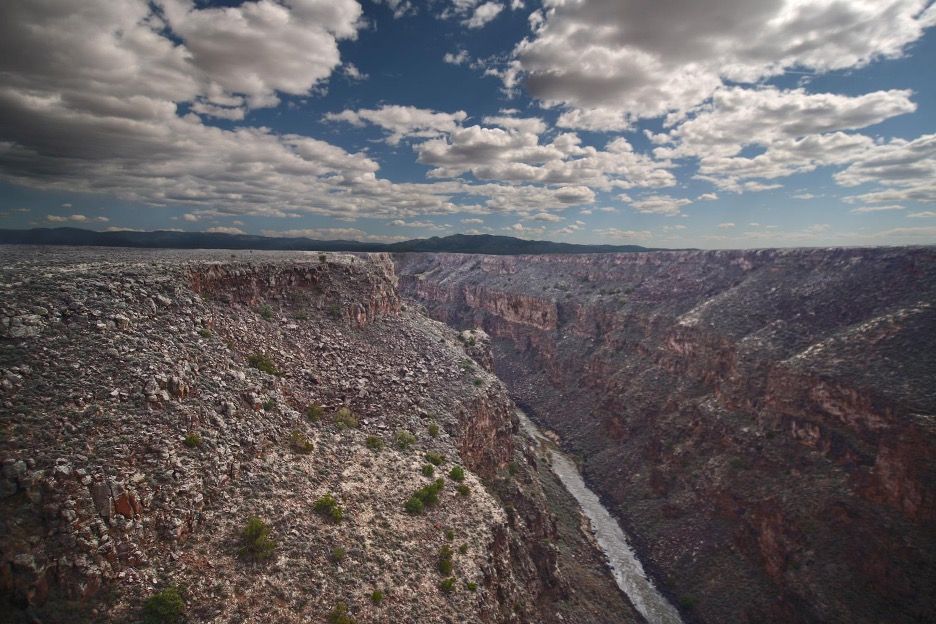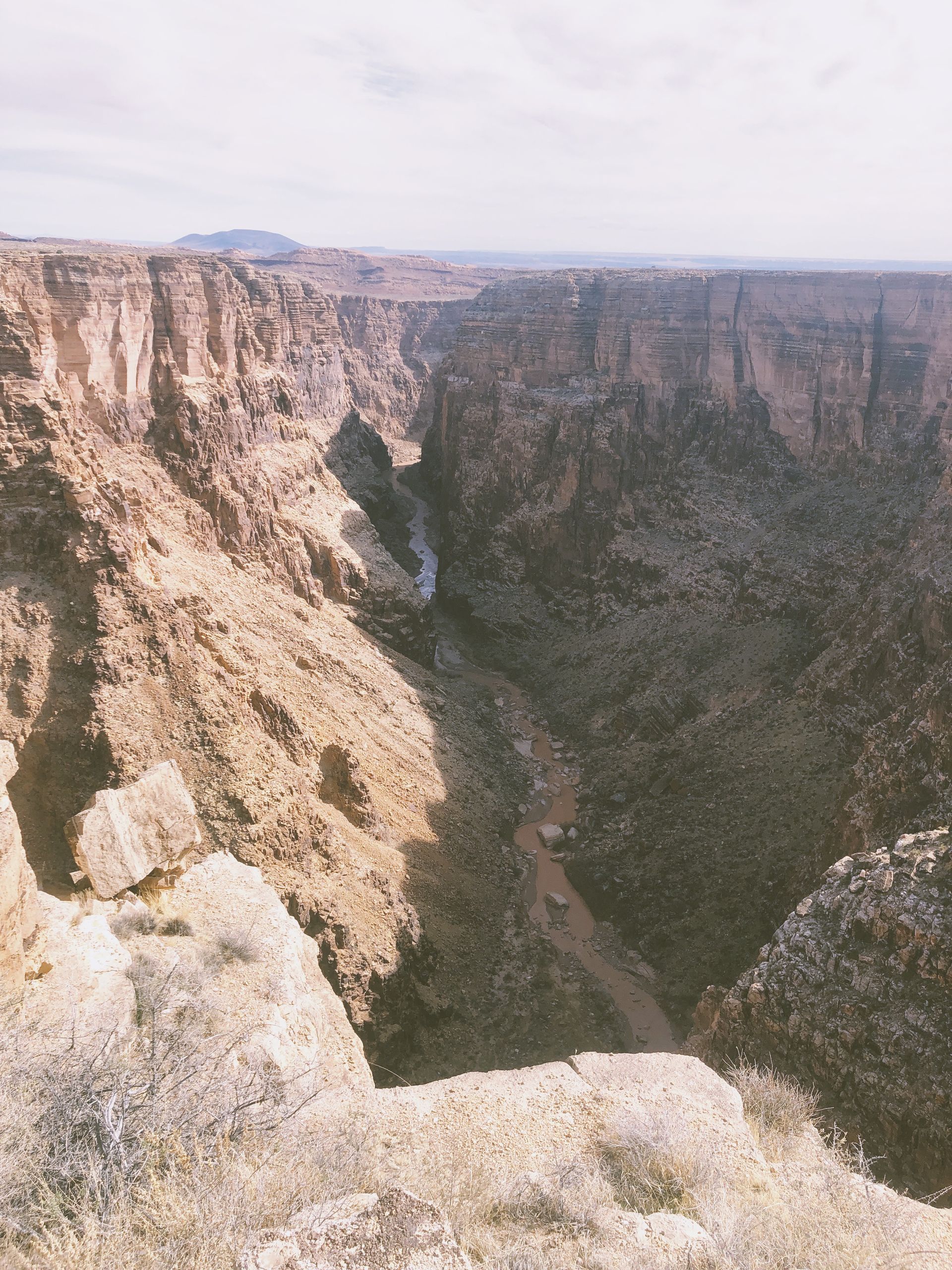Drought on Arrival: The Southwest’s Grim 2025 Outlook

Introduction
The Southern Rocky Mountains, particularly the Sangre De Cristo mountain range in New Mexico, is suffering through an abysmal winter. While El Niño years have historically favored a deeper snowpack for more northern and coastal regions, such as the Cascades and Northern Rockies, this year has been particularly rough for the southern reaches of North America’s largest mountain range. As of March 13th, 2025, Opensnow data currently shows that the snowpack for Taos, the largest ski resort in New Mexico, sits at 26% of average. While this figure is certainly disappointing for skiers in the region, the implications of this reach much further than outdoor recreation. The American Southwest heavily depends on the water that melts from the yearly winter snowpack for drinking water, irrigation, and a plethora of other uses. With almost one quarter of the average snow melt available for beneficial use, the prior appropriation system of this region is set to experience the most difficulty it has had in years in ensuring that water rights holders receive their yearly allocation.
The Severity of the Situation
To fully understand the severity of the lack of snow this region has experienced during the 2024-25 winter, some additional figures and statistics are required. Snow Telemetry (SNOTEL) snow water equivalent (SWE) values show that New Mexico’s eight basins sit at 0%, 5%, 19%, 21%, 23%, 25%, 37%, and 58% of the 1991-2020 median. Further, The Durango Herald opines that the temperature of the region has consistently sat at 11-22 degrees Fahrenheit above average this winter. This figure is in line with a claim by Tony Bergantino, the director at the Wyoming State Climate office, who stated that New Mexico had its warmest October-December since 1895. Not only does this provide evidence of far less snowfall, but it also shows that the snow that has fallen has melted and flown downstream much earlier than it normally would. This reality has proven to be significantly impactful to reservoirs across the state of New Mexico as well. A report published by the Natural Resources Conservation Service on March 1 shows that the reservoirs in the Lower Rio Grande, Rio Chama-Upper Rio Grande, and Pecos basins sit at 11%, 10%, and 7%, respectively. The report also discusses the forecasted streamflow volumes in relation to the 1991-2020 median. These figures are equally as abysmal, as the Lower Rio Grande, Zuni, Gila-San Francisco, Pecos, and Rio Chama-Upper Rio Grande Basins are projected to be at 4%, 22%, 35%, 36%, and 39%, respectively this spring and summer. All these statistics paint a picture of a scary reality regarding the availability of water across the American Southwest in 2025, with many of these figures providing evidence of record-breaking drought conditions that will have countless ripple effects on humans, wildlife, and the landscape of the region.
Ancillary Effects
While not directly related to water, this discussion could not take place without mentioning the impacts a drought of this severity will have on wildfires across the region. An article by Source NM states that even before spring has officially started, two red flag warnings have already been issued this year by the National Weather Service. The first warning was unbelievably issued on January 4, while the second came just over a month later, on February 5. This severe drought, combined with several other situational factors, has created a dire outlook regarding the potential impact that wildfires could have on the state throughout the rest of 2025. Another article by Source NM asserts that fine fuels, which provide the ability for blazes to grow rapidly, are abundant due to two consecutive years of plentiful precipitation preceding this historic drought. Plants like grass and pine trees were able to thrive under wet conditions over the last 24 months but have now become dry and easily ignitable due to the lack of recent rain and snowfall. An article by the Denver Post provides a bleak outlook for this situation, as dry and hot conditions are predicted to take hold over the coming spring months. Biologically, this is the perfect storm for a fire season of epic proportions, a situation created largely by the abysmal winter this region of the United States has suffered through.
Unfortunately, the political situation we find ourselves in in the United States is set to exacerbate this situation even further. According to Source NM, the Department of Agriculture recently let go of 34,000 employees, and 75% of them were equipped with firefighting capabilities. Further, the same article states that two firefighting dispatching stations in some of the most fire-prone areas of New Mexico, including the Gila National Forest, have been shut down. Additionally, also highlighted by Source NM, President Trump’s decision to gut the probationary workforce and enact a temporary hiring freeze on seasonal employees across federal agencies such as the National Forest Service, Bureau of Land Management, and Department of the Interior limits the ability for the government to put up a fight when intense blazes inevitably break out. The West is clearly unprepared to handle what could be a historically destructive wildfire season headed for us in the coming months, as a potentially deadly combination of factors have combined to create a truly bleak outlook for the 2025 fire season.
Effects on the Prior Appropriation System
The extreme decline in water across New Mexico’s streams and reservoirs is set to impact the state’s prior appropriation system significantly. According to the Bureau of Reclamation, New Mexico is one of seven states reliant on the Colorado River for fresh water utilized for a variety of purposes, including irrigation, municipal, and commercial use. The Bureau of Reclamation further explains that New Mexico receives their allocation of Colorado River water via the San Juan-Chama project, which diverts water from the San Juan River, a major tributary of the Colorado River, to the Rio Grande Basin. This reality presents a difficult situation for not only New Mexico, but also the states of Colorado, Wyoming, Arizona, Nevada, Utah, Arizona, various Native American tribes across the region, and Mexico, as they all rely on the Colorado River to supply this arid region with such a valuable resource.
New Mexico is no stranger to drought, so they have implemented measures to prepare for bad winters, such as the one they have experienced in 2024-25. According to the Colorado Environmental Law Journal, New Mexico created the Strategic Water Reserve as a means of navigating interstate water agreements, such as the 1922 Colorado River Basin Compact that governs their allocation. This allows the state to appropriate funds to purchase additional water rights in times of shortage, such as right now. However, despite these preventative measures, New Mexico still finds themselves in a precarious position. The Colorado Environmental Law Journal further opines lower basin states like California still have superior bargaining power in times of drought because San Juan-Chama authorizing language states that New Mexico must take reductions of their Colorado River Basin to ensure that these states' senior rights are fulfilled. Considering this current drought has also substantially affected other southwestern states, like Arizona and Nevada, this places New Mexico in a precarious position. The primary tenant of the prior appropriation system, “first time in time, first in right”, creates a system where junior rights holders are simply not made whole in times when their inferior rights cannot be fulfilled.
New Mexico recognizes that this is an unfortunate reality the arid west must come to grips with, and developed a system called Priority Administration to address drought conditions under the prior appropriation system. The Utton Center states that under this system, the State Engineer holds a large amount of discretion as to how to curtail usage to adhere to current drought conditions. The process begins with the State Engineer identifying all the priority dates within a stream system. Then, a final list of all the water rights in the system is published, giving rights holders the chance to appeal the date associated with their right. Due to New Mexico’s agricultural history, many of the most senior rights in the system are held in extremely rural, agrarian areas. This pits them against large urban areas like Santa Fe and Albuquerque, creating a situation where the state may experience significant negative economic impacts if one of these senior rights holders places a priority call against a junior, urban rights holder. This reality highlights the significant difficulty states in the arid west have in dealing with a drought of these extreme proportions. While Priority Administration is a tool of last resort, the extreme figures described in the previous section point to a high likelihood of the system being implemented in 2025, creating a troubling outlook for the future of New Mexico’s water adjudication system.
Conclusion
It has become abundantly clear that New Mexico is in an extremely precarious position as we shift from winter to spring in 2025. Time is quickly running out for the region to experience a pattern shift that will result in a significant amount of snowfall. The state as a whole must begin preparing for what is looking to be one the driest years in recorded history. The effects on the state’s ability to ensure that rights holders receive their allocation will inevitably be affected greatly, as they will be forced to navigate some of the biggest strains the prior appropriation system has ever seen placed on it. The impacts of this drought will likely be exacerbated by a potentially historic fire system, which unfortunately requires even more water to mitigate potentially catastrophic damage to public lands and private property. 2025 is set to put the adequacy of the prior appropriation to the test, and as we navigate the increasingly impactful effects of climate change, it will be fascinating to see if this comprehensive system of water allocation will be able to keep up.
Sources
- OpenSnow, Taos Snow Report, https://opensnow.com/location/taos/snow-report, (last visited Mar. 13, 202).
- U.S. Drought Monitor, Snow Drought: Current Conditions and Impacts in the West, Drought.gov (Mar. 6, 2025).
- Danielle Prokop, New Mexico Snowpacks in the Red; Dry and Hot Weather Expected, The Durango Herald (Mar. 13, 2025).
- Nat. Res. Conservation Serv., New Mexico Basin Water Supply Outlook Report, U.S. Dep’t of Agric. (Mar. 1, 2025).
- Danielle Prokop, New Mexico Snowpacks in the Red; Dry and Hot Weather Expected, Source N.M. (Mar. 13, 2025).
- Patrick Lohmann, 'It's Bad': How Drought, Lack of Snowpack and Federal Cuts Could Spell Wildfire Disaster, Source N.M. (Mar. 10, 2025).
- Conrad Swanson, Drought, Fire and Climate Change Put the West—and New Mexico—at Risk, Denver Post (Mar. 11, 2025).
- U.S. Bureau of Reclamation, Colorado River Basin, U.S. Dep’t of the Interior (last visited Mar. 13, 2025).
- U.S. Bureau of Reclamation, Upper Colorado River Basin Projects, U.S. Dep’t of the Interior (last visited Mar. 13, 2025).
- Katherine H. Tara & John Fleck, Water Rights and Environmental Justice in the West, Ctr. For Env’t L. & Justice.
- Utton Transboundary Resources Ctr., Priority Administration of Water Rights, Univ. Of New Mexico.



